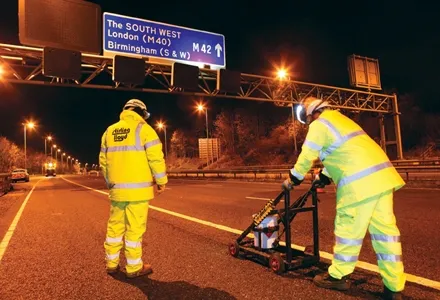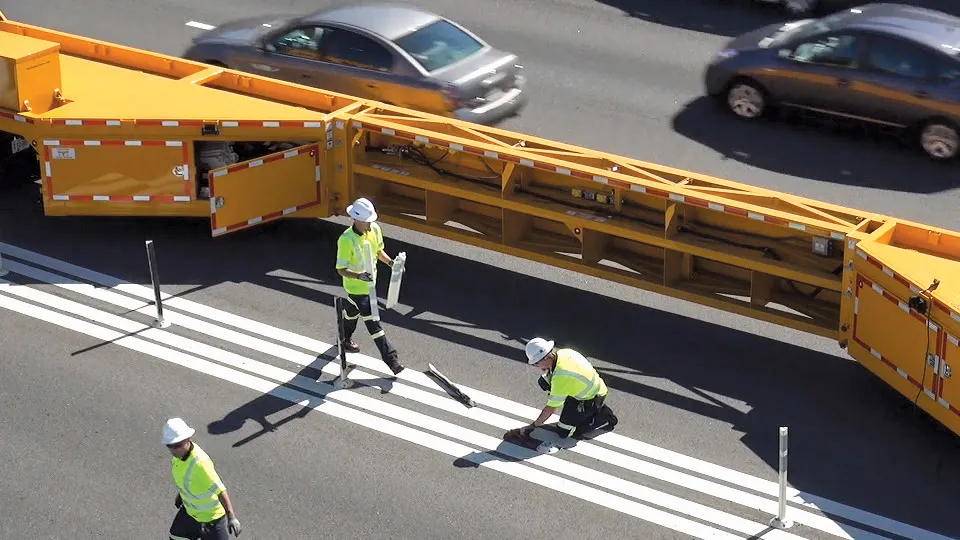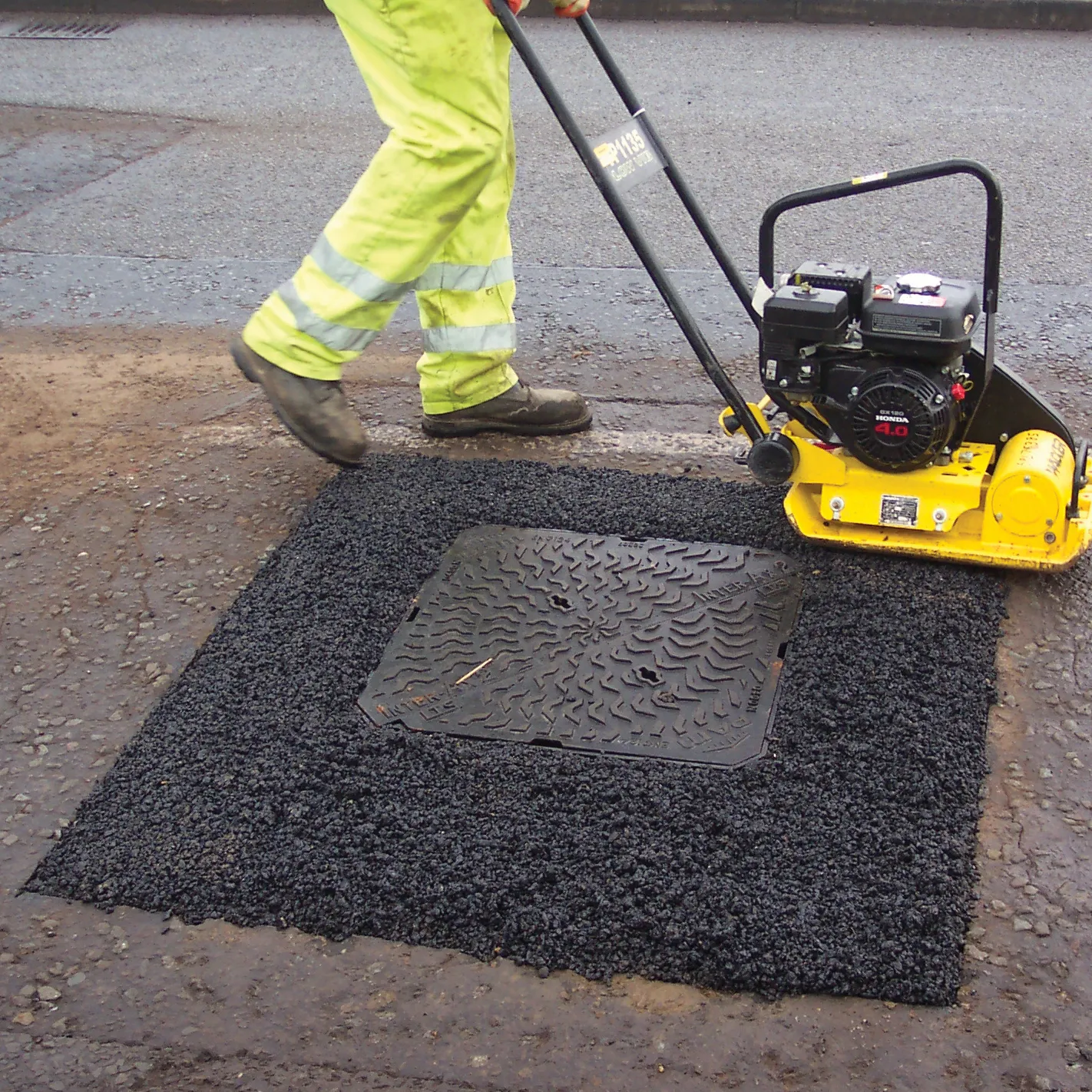Overnight repair work on a major English motorway has avoided the major traffic disruption and significantly increased road surfacing costs that would have occurred if left untreated.
February 17, 2012
Read time: 2 mins

Overnight repair work on a major English motorway has avoided the major traffic disruption and significantly increased road surfacing costs that would have occurred if left untreated.
The problem affecting a large stretch of the M42 close to Birmingham Airport and the nearby NEC Arena in the Midlands region was completed using highways maintenance products from2314 Stirling Lloyd. It concerned fretted joints in the wheel tract to the road surface.
Faced with the prospect of completely removing the road surface if left untreated, Amey Area 9 (sole provider to the2309 Highways Agency of management services and maintenance of the motorway network throughout the Midlands) quickly set out to find an effective and durable repair method.
Its search concluded that Stirling Lloyd's HAPAS [Highways Authorities Product Approval Scheme]-approved Safetrack Crack Infill system "was the ideal reinstatement solution." Based on an advanced, fast-curing reactive resin, this high-performance road maintenance system is designed to arrest further decay of the road surface by filling cracks or fretted joints, supporting the edges of the asphalt while preventing water penetration.
Given the stretch of motorway affected and the heavy traffic experienced along this route, Amey Area 9 understandably wanted to test the system on an initial 100m section of the road over a six-week period before committing to the full works. The Safetrack Crack Infill system proved highly successful, both in application and performance, so was selected to complete the remainder of the repair, approximately 17,000m.
To minimise disruption to motorists the works were carried out over a series of night-time closures between 11pm and 4am. Within this five-hour window, specialist contractor, Line Markings, had to set out the traffic management, prepare the crack, apply the Safetrack Crack Infill and remove the traffic control.
Despite the tight time constraint the system's simple but speedy application technique and its fast cure enabled the treatment of approximately 1,000m of motorway per night shift.
Line Markings was able to complete the works in under three weeks, one week ahead of schedule. According to Stirling Lloyd, so impressed was Amey Area 9 with the performance and speed of Safetrack's application that the contractor was asked to return a few weeks later and complete the reinstatement of a further 3,600m of the motorway.
The problem affecting a large stretch of the M42 close to Birmingham Airport and the nearby NEC Arena in the Midlands region was completed using highways maintenance products from
Faced with the prospect of completely removing the road surface if left untreated, Amey Area 9 (sole provider to the
Its search concluded that Stirling Lloyd's HAPAS [Highways Authorities Product Approval Scheme]-approved Safetrack Crack Infill system "was the ideal reinstatement solution." Based on an advanced, fast-curing reactive resin, this high-performance road maintenance system is designed to arrest further decay of the road surface by filling cracks or fretted joints, supporting the edges of the asphalt while preventing water penetration.
Given the stretch of motorway affected and the heavy traffic experienced along this route, Amey Area 9 understandably wanted to test the system on an initial 100m section of the road over a six-week period before committing to the full works. The Safetrack Crack Infill system proved highly successful, both in application and performance, so was selected to complete the remainder of the repair, approximately 17,000m.
To minimise disruption to motorists the works were carried out over a series of night-time closures between 11pm and 4am. Within this five-hour window, specialist contractor, Line Markings, had to set out the traffic management, prepare the crack, apply the Safetrack Crack Infill and remove the traffic control.
Despite the tight time constraint the system's simple but speedy application technique and its fast cure enabled the treatment of approximately 1,000m of motorway per night shift.
Line Markings was able to complete the works in under three weeks, one week ahead of schedule. According to Stirling Lloyd, so impressed was Amey Area 9 with the performance and speed of Safetrack's application that the contractor was asked to return a few weeks later and complete the reinstatement of a further 3,600m of the motorway.









